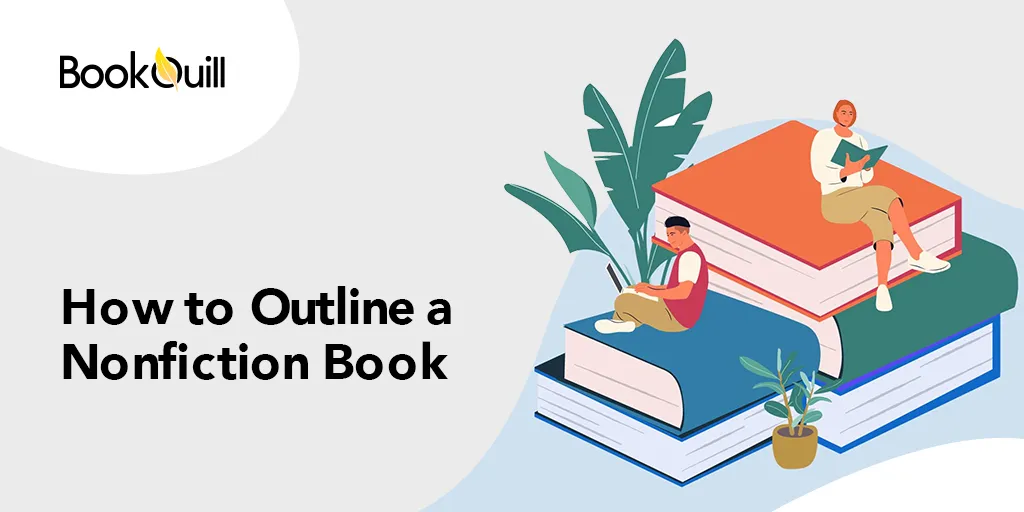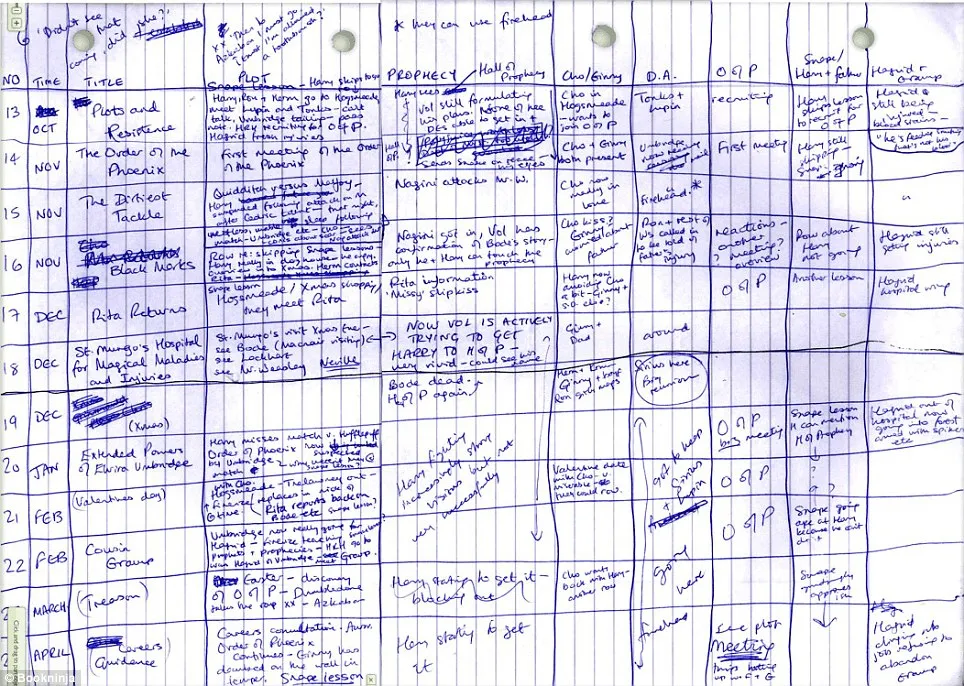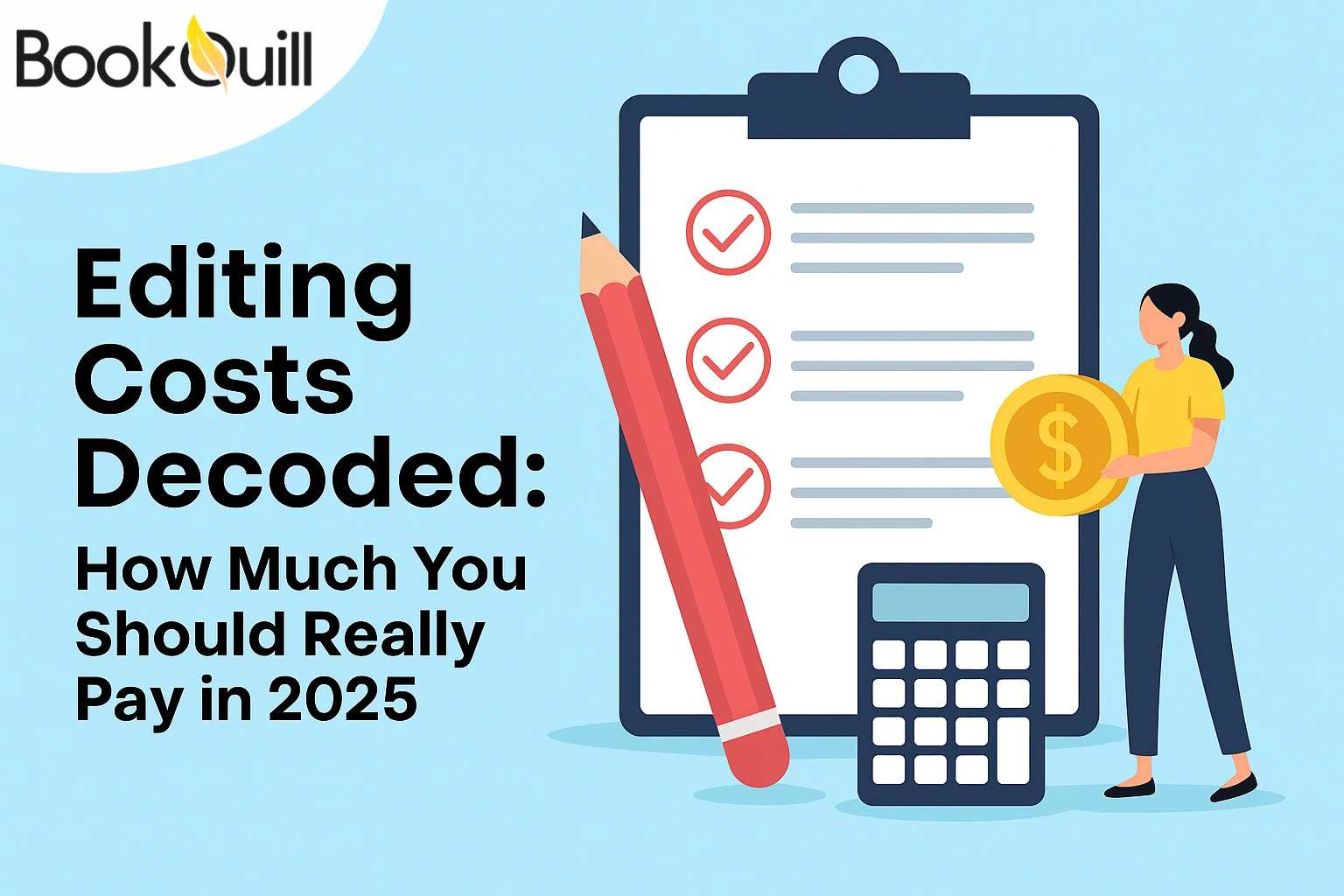Table of Contents
Explore Blogs
Trending on Ebook
How to Outline a Non-fiction Book [With Nonfiction Book Outline Template]

Can you win a war without strategy? It’s the same with an outline. An book outline is like a blueprint that helps you plan out your book. It enables you to make sense of your ideas, organize your thoughts, set goals, and execute the project on time.
Without a book outline to help you organize your ideas and create a clear structure, your good idea remains just that—a good idea without a plan for execution. So, the question remains: how to start a book?
In this post, we’ll explain how to make a book outline and give you a free nonfiction book outline template to use. Keep reading to find out more!
Why You Need a Nonfiction Book Outline
Jumping into writing a non fiction book without creating an outline is the literary equal of trying to run before you can walk. An outline acts as a roadmap for your writing process, guiding you on what to include in each chapter. If anything, an outline is crucial for non-fiction books.
Non-fiction books have complex ideas, concepts, and facts. A book outline ensures a logical flow of information throughout the book. Whether you’re writing a memoir or expository non-fiction, an outline helps map out the content into small, digestible bits.
A book outline will ensure that the events you recount and the complex ideas you present are structured, so readers can follow the narrative. Creating a outline for nonfiction book is important because there’s a greater reliance on facts and information than in fiction.
How to Outline a Nonfiction Book
Wondering, how to create an outline for nonfiction? Do you need any tools or software to create an outline for nonfiction? Well, when it comes to writing nonfiction book outline, you don’t need any fancy tools or software. You can do it in Google Docs or Microsoft Word. Here is a simple way to outline your non-fiction book without any software:
Define a Purpose and Craft a Working Title
To start, define the main goal of your book. Ask yourself, “What do I hope my readers will take away or discover from this book?” Understanding the purpose of your book will bring clarity.
Once you know what you want to write, think about who it is for. Ask yourself pertinent questions like:
- What problems are my target readers facing?
- What questions do they have?
- What lessons will my book cover?
- What value does my book offer them?
You can then decide what the outline for your nonfiction book will cover. Keep the key idea of your book in mind throughout the writing process to ensure you never lose sight of its purpose.
Create a working title that captures the main idea of your book. This title will act as a reference point throughout the writing process. Don’t spend too much time trying to come up with the best working title because you can make adjustments or change it later, if you find a more suitable one.
Brainstorm Ideas
Once you’ve defined the purpose of your book, start a brainstorming session. Creating a mind map or engaging in brainstorming is a great way to visualize your idea. Many authors, including J.K Rowling and Sylvia Plath, use this technique to help their creative process.

Credit: Daily Mail
J.K Rowling’s hand drawn spreadsheet for the Harry Potter novels
A brainstorming session can help elaborate on your idea, allowing you to generate more content and explain your vision more effectively. While there are many techniques of brainstorming, one of the most popular ones is mind mapping.
A mind map is a type of brainstorming technique that represents the relationships between different aspects of your main theme. It can help in identifying key ideas of your topic and assist in discovering connections between two seemingly different concepts. To create a map, make a thought cloud with the main concept or theme of your book in the center of a page and branch out with related ideas.
Write down everything you can think of that you want to add to your book. The idea here is to help you think and get most of the ideas out on paper. You can then connect these branches to subtopics, supporting details, and examples.
Establish a Logical Flow
You can give your book a structured framework by logically grouping the ideas you brainstormed into themes or categories. Revisit the mind map you created and cluster similar ideas. What does this mean exactly? Well, let’s say your central idea was creativity. You can group together definitions and the different forms of creativity to add to one chapter. Similarly, you can cluster the different creative problems you identified.
This step will assist you in identifying central ideas that will serve as the framework for each chapter. Organizing related ideas into groups is crucial to maintaining the coherence of the book’s narrative.
Outline Each Chapter
You have the main idea and the supporting ideas, now what? How to structure a nonfiction book? Well, once you have grouped the similar ideas, consider the information flow and break it into chapters. This provides a manageable structure, with each chapter focusing on a specific aspect of the larger theme.
Refer back to the mind map to identify which ideas deserve a chapter of their own and which can be subtopics of another idea. While each chapter might delve into different aspects of the topic, ensure they are structured to maintain a seamless flow of ideas.
A coherent order guarantees that your audience can comprehend the ideas as they progress through the book without experiencing confusion. Consider how each chapter builds upon the previous one and adds to the overall message of your book.
Here is what a book outline should look like when divided into chapters:
Working Title: Creativity Inc.
Chapter 1: The Creative Mindset
A. Understanding Creativity
- Dictionary definition of creativity
- My definition of creativity
- The different forms of creativity
B. Overcoming Creative Blocks
- What are creative blocks
- What causes them
- The different forms of creativity
C. Nurturing a Creative Environment
- What helps creativity
- Examples of famous creative minds and their creativity rituals
- How to create the perfect creative environment
Chapter 2: The Power of Inspiration
A. Finding Inspiration in Everyday Life
- Exploring mindfulness in everyday routine
- Finding inspiration in ordinary everyday practices
- Discuss journaling and the importance of reflecting on experiences
B. Exploring Different Art Forms
- Exploring core concepts of diverse art forms
- Suggesting activities for hands-on experimentation with various art forms
- Discuss blending art forms and the benefits of a multi-disciplinary approach
C. Learning from Creative Icons
- Provide biographical examples of renowned creative figures
- Explain life experiences that shape the way they approach innovation
- Incorporate interviews and perspectives from creative icons
Building detailed outlines for each chapter will aid the writing process. Include key points, subpoints, supporting examples, and evidence in your outline. This helps prevent writer’s block and ensures each chapter maintains a clear and coherent structure.
With a detailed outline, you can write non-linearly or as inspiration comes. Even if you skip a chapter to write the next one, you can return to it later without worrying about inconsistencies.
Review and Refine
Don’t forget to include an introduction and conclusion in your book as they provide crucial context and closure. An engaging introduction captures attention, and a thoughtful conclusion summarizing key points can leave a lasting impression. They combine to enhance the reading experience.
Once you’ve finished creating your outline, review it for coherence, completeness, and consistency. Take a look at your outline the next day with a fresh set of eyes. It can be difficult to spot mistakes in your write-up if you have been staring at it for hours.
Ensure that each chapter aligns with the overall vision of your book and that the flow of information and ideas makes sense. This approach allows you to catch any potential issues early on and refine your outline as needed.
Nonfiction Book Outline Template
As promised, Here’s a simple template to help you get started on your nonfiction book outline:
Book Title: [Your Working Title]
Introduction/Foreword
A. Explain the purpose of the book
B. Give a brief overview of the topic
Chapter 1: [Chapter Heading]
A. Main Point 1
B. Main Point 2
C. Supporting Examples/Evidence
Chapter 2: [Chapter Heading]
A. Main Point 1
B. Main Point 2
C. Supporting Examples/Evidence
Chapter 3: [Chapter Heading]
A. Main Point 1
B. Main Point 2
C. Supporting Examples/Evidence
Chapter 4: [Chapter Heading]
A. Main Point 1
B. Main Point 2
C. Supporting Examples/Evidence
Conclusion
A. Reemphasize the key points
B. Explain what you hope the reader takes away from the book
C. Any final closing thoughts
Benefits of a Nonfiction book outline
Are you still unsure about creating a nonfiction outline before you start writing? You can always take help in writing nonfiction books:
Content Organization
We do not always think and process thoughts linearly or sequentially. If you start writing without an outline and force yourself to think sequentially, you will eventually experience writer’s block. A book outline will organize your thoughts and the content.
A book outline will establish the structure of your book. It will determine the order of chapters, and ensure a natural flow of information that is easy for readers to follow and understand.
Increased Productivity
If you’re prone to procrastination, the idea of writing a book may seem like a huge, unachievable goal. But if you break it down into smaller achievable milestones, you can do it. You are more likely to finish your book if you know where to start and where to end.
An outline is also a great way to prevent writer’s block because you already have the chapters mapped out. You already know what you will be writing about in each section of the book.
Streamlined Writing Process
With a well-structured outline, you can focus on the main ideas and key messages you want to convey. This prevents your book from becoming scattered or losing its primary purpose.
When creating an outline, you think about the flow, style, and structure of your book. You decide if your book follows a linear structure, or would be divided into sections. By addressing these foundational elements, you can then focus on writing the content.
Nonfiction books typically involve research or various facts gathered from multiple sources. An outline serves as a framework to organize this information cohesively in one place.
In the outline, each fact or research point corresponds to the key concept or theme it supports, while subpoints represent supporting details or evidence.
With the help of an outline, you may notice gaps in your research or find areas where more information is needed. This early awareness allows you to address content gaps and streamline the writing process, ensuring that your book is comprehensive and well-informed.
There You Are!
We strongly recommend trying book outlining. It organizes your thoughts, provides a framework, and combats writer’s block. By planning out your book with an outline, you can turn seemingly vague ideas into an interesting narrative that is to hard to put down.
If you’re struggling with the book outlining and writing process, reach out to us! We can assist with outlining, writing, illustrating, printing, and publishing your book. Talk to a BookQuill expert today at 833-587-7003.
Frequently Asked Questions
What is the outline structure of a book?
A book outline is a document that lists and details the information included in your book in a structured manner. It serves as a framework for your book and will guide you as you write.
How do you outline a nonfiction book?
Start by defining your book’s main idea and creating a mind map to help visualize all you want to talk about. Create a structured flow of these ideas. Divide each key topic or main idea into a chapter. Write down sub-topics for each chapter. Read and revise as you go.
Should I use a special outlining software?
You do not need outlining software to create a book outline. If you already work with content organization software like Scrivener, keep using it. But do not waste time and money learning new software when you can work without it just as well, especially if you are a first-time author.
How many chapters are in a nonfiction book?
Nonfiction books usually have anywhere from 5 to 20 chapters, although this can vary. Different book structures with varying chapter lengths and numbers are common in the non-fiction genre.




